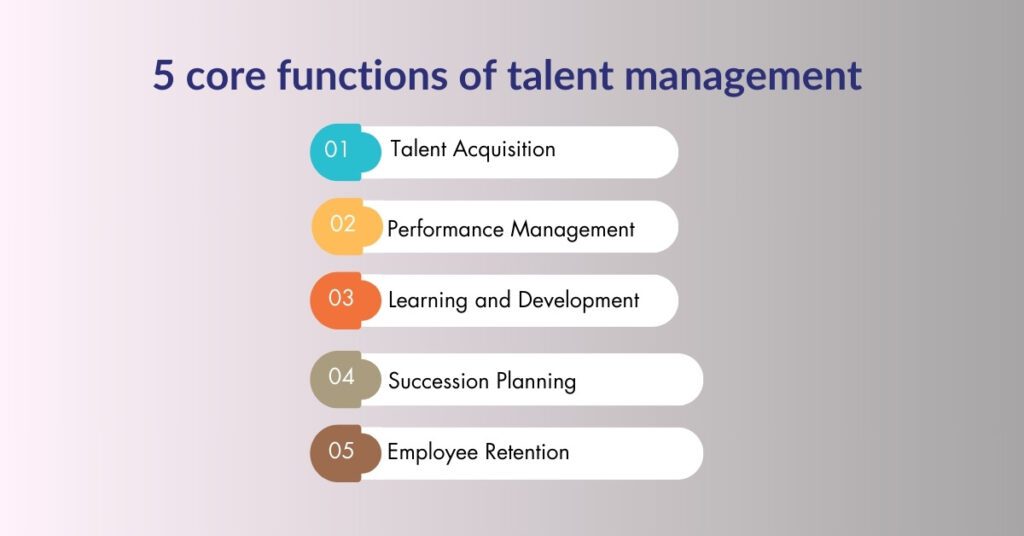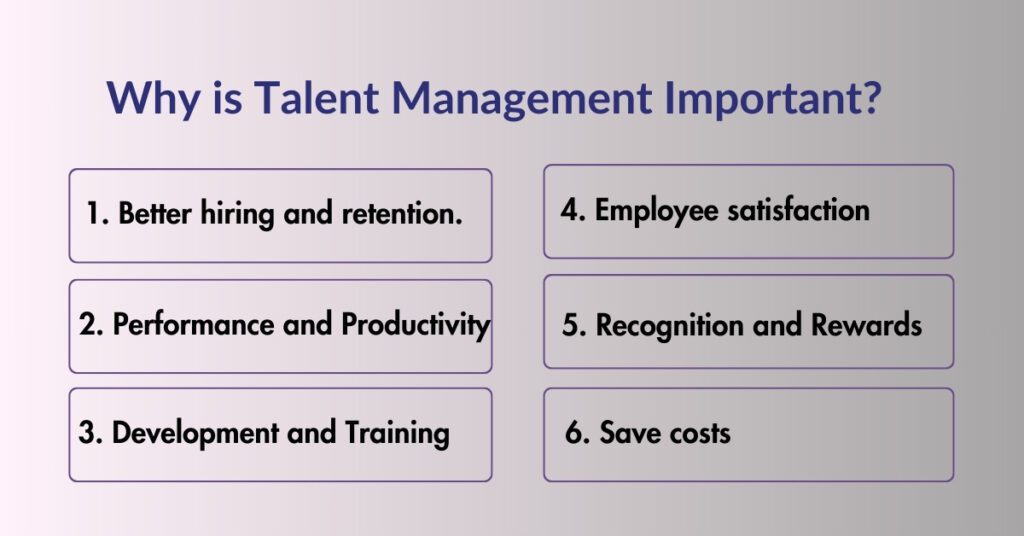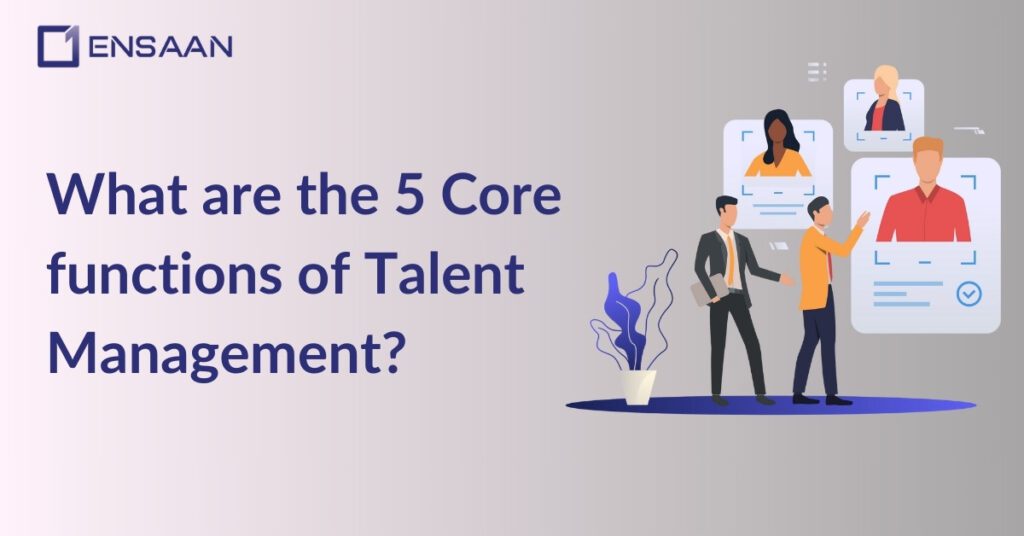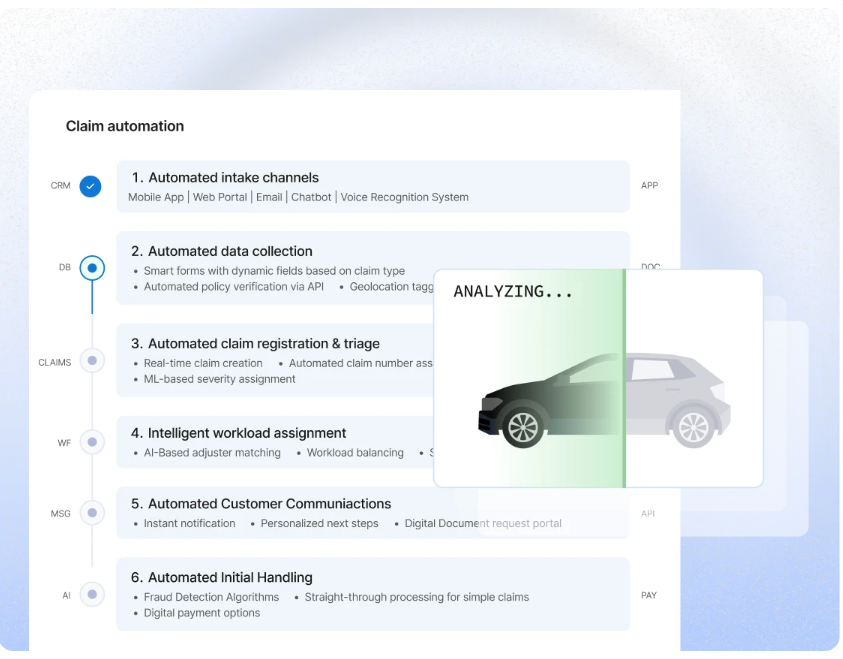When it comes to expanding a successful enterprise, one thing stands out above all others, your employees.
Talent Management provides the solution. Talent management is the process of finding, nurturing, and keeping happy the right talent in an organization.
Talent management is all about hiring, training, and retaining top talent to help a company flourish. It takes an effective, people-centric approach that ensures your team remains highly motivated, skilled, and aligned with business goals.
We will explore the five core functions of talent management so you can better comprehend why and how talent management helps your business flourish.
Table of contents

What is Talent Management?
Talent Management is the process of employing human resource (HR) strategies and processes that use cutting-edge HR practices to identify, select, motivate and retain top talent employees.
The aim is to enhance overall performance through more connected and strategic human management practices.
Let’s make that even simpler:
1. HR Processes that work together
Talent management encompasses many HR tasks, from hiring and training new staff members and managing performance reviews to rewarding employees for outstanding work performance. Instead of treating these individual tasks separately, talent management brings these facets together for improved results.
2. Focus on Key Areas
It covers all the important parts of HR, such as:
- Hiring the right people
- Training and developing employees
- Managing performance
- Improving the employee experience
- Rewarding hard work
- Planning for the future workforce
3. Boosting Employee Performance
Talent management is at its core about helping employees do their best work. When people feel motivated and supported, their performance naturally improves; having strong talent practices allows a company to stand out among competitors.
HR professionals play an important role in talent management. They devise strategies that align with company goals and values while making sure employees receive training to grow professionally and realize success.
While HR oversees talent management, managers, team leaders and top executives all play an essential part.
By providing necessary support tools and resources needed for talent management across their company.
5 core functions of talent management

1. Talent Acquisition (Hiring the Right People)
Talent Acquisition is the first step in finding and bringing in the best people for your team.
Talent Acquisition is not just about filling vacancies. Talent acquisition is a strategic process of attracting, sourcing, interviewing, and selecting candidates who are a good fit for your company.
Why it matters:
Hiring the right people means fewer mistakes, better teamwork, and a stronger company culture.
What it includes:
- Writing clear and attractive job descriptions
- Advertising job openings on the right platforms
- Screening and interviewing candidates
- Making the final hiring decision
Pro Tip:
Use tools like an ATS (Applicant Tracking System) to streamline the recruitment process and reduce hiring time.
2. Performance Management (Helping Employee Do Their Best)
Once you’ve hired the right people, the next step is helping them perform well in their roles.
Performance Management is all about setting clear goals, providing feedback, and helping employees stay on track.
Why it matters:
Employees work better when they know what’s expected of them and get regular feedback. It improves productivity and job satisfaction.
What it includes:
- Setting individual and team goals
- Regular performance reviews or check-ins
- Giving constructive feedback
- Rewarding good performance
Pro Tip:
Use a performance management system to track goals and measure performance in real-time.
3. Learning and Development (Upskilling Your Team)
In a fast-changing world, you can’t stop learning, and neither should your employees.
Learning and Development (L&D) means offering training programs that help employees learn new skills or grow in their roles.
Why it matters:
Trained employees feel more confident and stay longer with the company. Plus, it prepares your team for future leadership.
What it includes:
- Employee onboarding and orientation
- Soft skill and technical training
- Online courses and workshops
- Leadership development programs
Pro Tip:
Use a Learning Management System (LMS) to deliver training easily and track progress.
4. Succession Planning (Preparing Future Leaders)
What happens if a key employee leaves tomorrow?
Succession planning ensures that you always have a backup plan. It identifies high-potential employees and prepares them for leadership or critical roles.
Why it matters:
It prevents disruptions when someone resigns or retires. You’ll already have someone trained and ready to take over.
What it includes:
- Identifying key roles in the organization
- Spotting talented employees with growth potential
- Creating leadership training plans
- Mentoring and coaching future leaders
Pro Tip:
Start early. Don’t wait for someone to leave to begin thinking about their replacement.
5. Employee Retention (Keeping Great People)
Hiring is hard. Losing good employees is harder.
That’s why Retention is a critical part of talent management. It’s all about making sure your top talent feels happy, valued, and motivated to stay.
Why it matters:
High turnover costs money and affects team morale. Retaining talent means better productivity and stronger company culture.
What it includes:
- Offering competitive salaries and benefits
- Building a positive work culture
- Recognizing employee achievements
- Providing growth opportunities and career paths
Pro Tip:
Conduct exit interviews to understand why employees leave — and fix the issues before others do the same.
Why Is Talent Management Important?

Talent management is important because it helps a company hire the right people, help them grow, and keep them for a long time. This leads to long-term success.
Here’s why it matters:
1. It helps with better hiring and retention.
Talent management allows companies to find the best people for the job and keep them happy. This reduces employee turnover and saves the company time and money.
2. It improves employee performance and productivity.
When employees are given chances to learn and grow, they perform better. Talent management also helps connect each person’s work to the company’s goals.
3. It prepares the company for the future.
Through proper planning, companies can train their current employees to become future leaders. It also helps ensure that the team has the right skills to face future challenges.
4. It boosts employee satisfaction.
Employees feel more valued when they are given learning opportunities and clear growth paths. Fair rewards and recognition also keep them motivated and happy.
5. It gives the company a competitive advantage.
A company with skilled, motivated employees can perform better than its competitors. Such a team is hard for other companies to copy.
6. It helps save costs.
By keeping top employees, companies don’t have to spend as much on hiring and training new people. It also avoids problems caused when key employees suddenly leave.

Conclusion
Talent Management isn’t just an HR buzzword; it’s a business essential. These five core functions – talent acquisition, performance management, Learning & Development, Succession Planning, and Employee Retention work together to build a workforce that is skilled, engaged, and future-ready.
If you invest in your people, they’ll invest in your business.
So, whether you’re an HR professional or a small business owner, start focusing on these five areas to build a happier, more productive team.
FAQs
The goal is to attract, develop, and retain skilled employees to meet business objectives and support company growth.
No. Businesses of all sizes can benefit from talent management strategies — even small startups.
HR handles all employee-related tasks, while talent management focuses more on people development, performance, and long-term planning.
Start with clear hiring processes, offer employee training, and create regular feedback systems. You don’t need fancy tools to begin.
Popular tools include ATS (for hiring), LMS (for training), and performance management software like BambooHR or Lattice.








